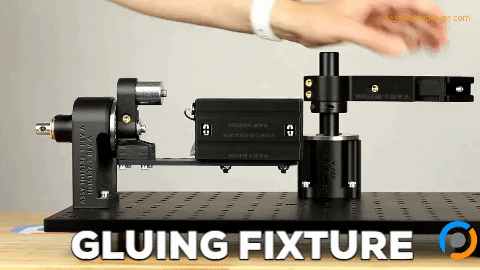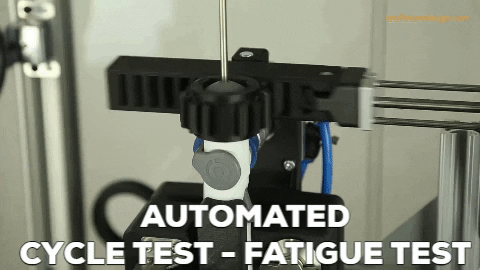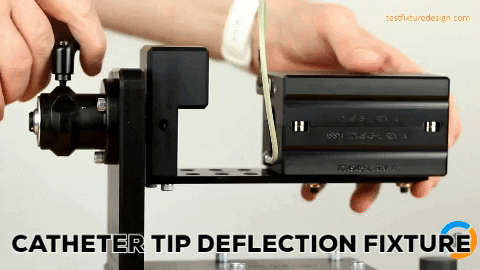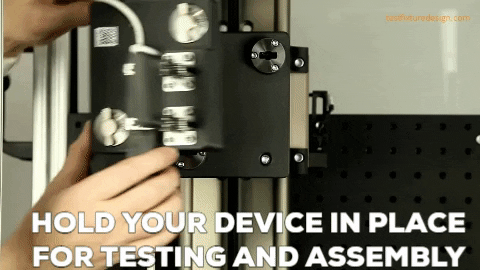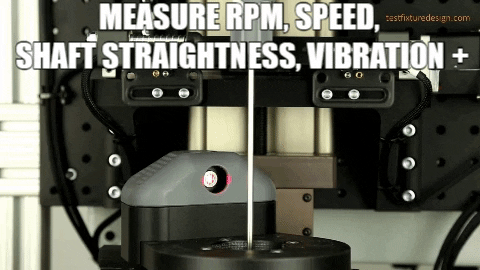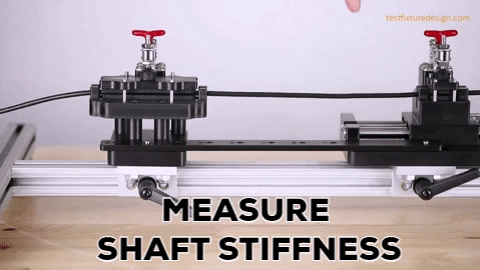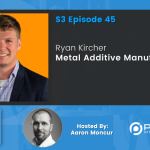Darragh Hudson | How to Set up A Manufacturing Supply Chain
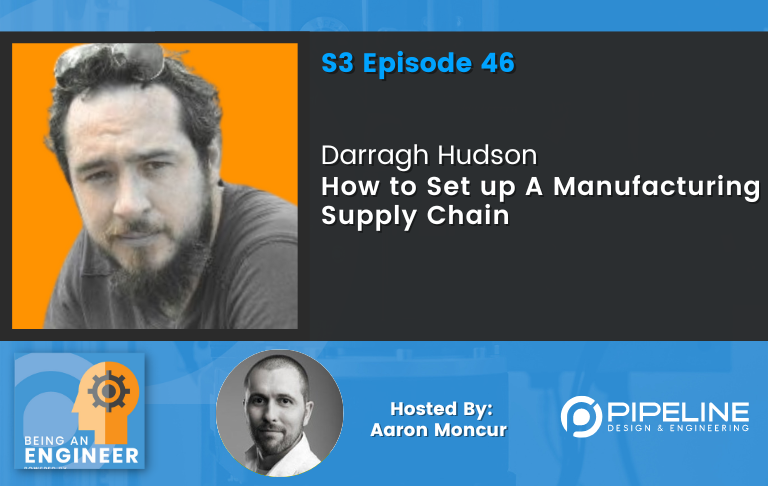
Who is Darragh Hudson?
Darragh Hudson holds a degree in Mechanical Engineering and has been designing and building products, teams and organizations in China since 2005. Darragh’s experience includes consumer, medical and domestic product design as well as manufacturing. He is also the founder of KD Product Development which specializes in setting up supply chains for new product introductions.
darragh.hudson@kdproductdev.com
Aaron Moncur, host
EXPAND TO VIEW EPISODE TRANSCRIPTION
SUMMARY KEYWORDS
supply chain, factory, people, product, manufacturing, engineer, china, companies, dfm, engineering, suppliers, design, talking, prototype, production, developing, customer, manufacture, pay, set
SPEAKERS
Presenter, Aaron Moncur, Darragh Hudson
Aaron Moncur 00:00
Tools, education and community to help engineers succeed. That’s the new platform we’re developing called the wave. One of the key features of the wave is called Design Accelerators. These are pre packaged CAD building blocks, similar to the low code, no code trend of the software industry, but for CAD, that help you finish new designs in hours instead of days. Download a sampling of our Design Accelerators for free at Team pipeline.us forward slash wave. And let us know what you think that’s Team pipeline.us. Forward slash wave. They’re free, but only for a limited time. So take advantage of this offer and download them today.
Presenter 00:45
Hi, everyone, we’ve set up this being an engineer podcast as an industry knowledge repository, if you will, we hope it’ll be a tool where engineers can learn about and connect with other companies, technologies, people resources and opportunities. So make some connections and enjoy the show. Then noted do not under Tools, they don’t even have the design files, they can’t move anywhere else. And effectively, they’re now selling the factories product that they designed for the factory.
Aaron Moncur 01:25
Hello and welcome to the being an engineer Podcast. Today we’re speaking with Darragh Hudson, who has a degree in mechanical engineering and has been designing and building products teams and organizations in China since 2005. DARS experience includes consumer medical and domestic product design, and manufacturing. And he is the founder at KD product development where one of their specialties in setting up supply chains for new product introductions. Darragh, welcome to the show.
Darragh Hudson 01:54
Thank you very much Aaron. It’s a pleasure to be on.
Aaron Moncur 01:57
Well, what made you decide to become an engineer?
Darragh Hudson 02:00
Well, I’m not going to pretend that it was some amazing oversight or praecipe that I had into what engineering could be in honestly, it was a vague interest and curiosity in how things work. And the fact that my school just pushed me in that direction. I think they thought that there was going to be job openings for engineers in future. So it was more true guidance than true me thinking that there was an amazing path forward.
Aaron Moncur 02:25
Okay, what would you say you mentioned, guidance from your school, but you had to have had some notion when you went in for them to say, oh, yeah, engineering, consider that. Were you into like math, or Legos or things like that? How did even the initial guidance come?
Darragh Hudson 02:41
Yeah. So the way the education system works in Ireland is you kind of decide what you want to do in university before you finish high school. So you tailor the subjects that you take towards the degree you want to take. So I was doing pretty good at mathematics and technical drawing, and basic language skills, like you need to have to get into a lot of universities in Ireland, you need to have a third language, you need to have our second language, I should say, we study Irish, but most of us don’t speak very well. But you need to have like French or German. So you kind of need to decide before you finish high school. And so yeah, my guidance counselor kind of pointed me in that direction. So they’re the subjects I chose. I honestly didn’t really know what it meant to be an engineer at that point. Like, even though I knew I was planning to be a mechanical engineer, I didn’t actually know what that meant in terms of the variety of, of places I could end up working. I didn’t really understand the difference between building machines manufacturing, consumer electronics, I just thought it was going to be more machine based. And obviously, over the years, I’ve learned what it actually means to be an engineer.
Aaron Moncur 03:46
Yeah, that’s so interesting, because I think it’s really common that we don’t really understand what it is to become an engineer. For me myself. It probably wasn’t until I was a few years into being an engineer that I fully realized, like how many different things you can do. You don’t just need to be a design engineer or just need to be a manufacturing engineer. There’s just a plethora of different avenues that one can go down with a background in engineering.
Darragh Hudson 04:14
Yeah, absolutely. And to be honest, I don’t think it was even in high school that I didn’t understand it was when I finished when I was an engineer. I knew theoretically what I had learned, but I still didn’t know how to implement that and what that was going to mean as a career or opportunities. I guess mechanical engineering can be quite a broad topic. So like from my my class of graduates, I can see some people went into traffic engineering, some people went into electricity engineering, some people were in waterworks, some of us went to manufacturing. So it’s very like these are totally different skill sets that are based on what we learned in college. But actually, the real core of what we’re implementing today in our day to day lives is what we learned in our early years as engineers off the back of the basic knowledge from university?
Aaron Moncur 05:03
Yeah, I think one of the great things about a degree in engineering is that it teaches you how to learn. And one, one of the things that an engineer can choose to learn is how to become a business owner. And you are a business owner, you, you have Katie product development. Can you talk a little bit about what is KT product development? And kind of what was the goal of starting that business? What was the journey like? Starting your own business?
Darragh Hudson 05:28
Yeah, for sure. I always say to people, when they asked me about being an engineer, that’s what it really taught me is to be a problem solver. I think that’s kind of what engineering is all about, no matter what area you get into. And that’s also kind of what led me to start KD. I spent a lot of my early years, the first 10 years manufacturing products for companies, mostly in Silicon Valley. And it was great, I learned a lot from it. But I could see a disconnect between product development firms and manufacturing firms. And it felt to me like product development firms, both in Europe and the US, were drifting more towards industrial design. And they were just assuming that China would pick up the difference and manufacturers. So I fell into that middle ground where I had all of these really, really cool PD firms coming to me with products they’ve designed. And we always joke about the Big Red China button. So they just throw over the files to China. And then China just makes it
Aaron Moncur 06:27
nice. So
Darragh Hudson 06:28
we had this DFM process regularly, which should be, you know, a month of DFM for a complex product will be good. But we ended up doing six months of DFM because it really wasn’t DFM it was product development. So that’s where KD came from, we decided that we think there’s a lot of value, or we thought there would be a lot of value in a product development firm, that takes responsibility for what it designs and actually takes it all the way through to manufacturing. So we were companies, we can develop design prototype, find the suppliers, go to the suppliers, but open tooling to assembly testing, verification certification, and prove that what we’ve designed works because it’s now available for sale. And that’s, that’s awesome. Cool. Well,
Aaron Moncur 07:15
so you grew up in Ireland, but you live in China now. Is that right?
Darragh Hudson 07:19
I’m actually in Hong Kong now.
Aaron Moncur 07:21
Hong Kong. Okay. Yeah,
Darragh Hudson 07:23
my mistake. No, no worries. I haven’t updated a lot of my profiles to reflect that. So yeah, I spent 15 years in Shenzhen. Always in the product design, development and manufacturing field. And then went COVID Here, I happened to be on holidays. And the China border shut down. Myself and my then pregnant wife weren’t able to get back into the country. So we packed Oh, my goodness. Yeah, it was, it was quite a while. So we we stayed in Ireland for a little while waiting for COVID to blow over. Then we went to the US because it hadn’t hit us. Yes. And then COVID. Right. And us. So we came back to Hong Kong, I thought I would pack up here for a month or two and then go home. And two and a half years later, we are still in Hong Kong, and this is home.
Aaron Moncur 08:11
Oh my goodness. So what happened to your home in China?
Darragh Hudson 08:14
Just we we we had friends of ours go over with their their phones and take photos and do live videos and pack it all up and ship it all over to Hong Kong? Wow.
Aaron Moncur 08:29
Well, you’re you’re, you’re still over there near China kind of in the the depths of where so many products are manufactured? I wonder are you seeing any new trends or patterns in manufacturing, you know, living there being boots on the ground that the rest of us here in the US or other parts of the world may not fully understand or be aware of.
Darragh Hudson 08:55
And I think over the last few years, and maybe not. So recently, China has been more open to what we call low volume high mix manufacturing. Whereas previously, China was really only about high volume. So that’s why a small companies and medium companies even struggle to get in. Because if you weren’t making hundreds of 1000s to millions of units factories weren’t interested. But as things have changed over the years, and this also comes with the cycles of like product design styles. You’ve gone from like Apple having one iPhone to having many iPhones, which means that even guys like Foxconn have had the change from cranking out one iPhone day and night to cranking out 10 Different iPhones depending on the color, the size, the memory, the latest model, the previous model. So everyone down the supply chain has a trickle down effect. So you know the big guys were making plastics for them now need to have more tools, more moles, the smaller factories who work around that whole ecosystem, they also evolve. So now there’s more openness to develop and manufacture and small volume high mix. And high mix, luckily for small companies means it can be a high mix of companies, not just products within one company. So for startups to get into China, now, you still need to have some volume, right? You’re not gonna come and manufacture 10 units and hope it works, you still have my 1000s. But factories are more open to taking small companies at high mix, which means it’s a little bit easier to get a foot into the manufacturing world doesn’t solve all your problems. And in some cases, it maybe it causes problems. But that’s a big, big change we’ve seen in the last five years, I would say,
Aaron Moncur 10:35
you know, it’s interesting that you mentioned that I get emails all the time from companies in China factories that are trying to sell their services to us. And I have I hadn’t really noticed notice. But thinking back now, I realized that I’ve gotten a higher volume lately of emails from companies that are doing really low volumes, like prototype falling. Have you seen shops that are kind of focused on on prototype volumes popping up over there? Yeah,
Darragh Hudson 11:02
I get maybe 10. Prototype sharp invites a week on LinkedIn alone. Yeah, I think this is a part of further evolution of the same thing. Because always there’s been an ecosystem of prototype shops who were there to service prototyping alone. But over time, they’ve seen that prototyping five units, 10 units is not too different to prototyping 100 units. And then once you’re prototyping 100 units is not too different to prototyping 1000 units. And then you end up with these prototype shops that become what we like to call bridge manufacturing. So it’s between prototyping between mass production. And they can really take care of small companies needs up to even 10s of 1000s of units depending on the complexity. But that comes at a cost as well, though, because these prototype shops are not not usually, sometimes they may be put to like usually set up with full manufacturing systems control. They don’t have full volume limitation. So they have the ability to build all the parts, and then they can have the ability to put them all together. But then they don’t necessarily have the manufacturing rigor to know what the testing levels should be. They still treat it like prototypes, but their customers may be choosing it like product, and are two very different things.
Aaron Moncur 12:17
That’s an important distinction. Yeah. I’d love to talk about supply chain for a bit. Katie does a variety of things, r&d, new product design, development, new product introduction, but supply chain is also a service that you offer. And it’s something that we haven’t really talked about much here on the podcast. Supply chain has become almost a buzzword over the past few years with a pandemic, right and supply chain, there’s and supply chain that maybe let’s start really, really basic. We all probably have a general sense of what supply chain means. But in your words, what what is the supply chain,
Darragh Hudson 12:57
I would say for me in my industry supply chain is starting at the very first most basic part of your product, the screws, the nuts, the bolts, the plastic resin, all the way through to the processing facilities that take those on all the way through to the injection molding, the stamping the die casting through to the next supplier who’s going to assemble them all. That’s on the mechanical side. And on the electronic side, it’s who’s making the MCU, who’s making the chipsets where’s your resistors coming from who’s your bulk wholesaler? These are these are the levels of details of supply chain. And this all comes through a very complex network of processors and factories and facilities to get to the guy who’s going to assemble it, but it doesn’t finish at the assembly, the assembly then will quite often send it to a Packard facility where your main product is then joined by its cable and its power supply. And it’s you know its carry bag and put it in its pretty box. And then that pretty box is sent to a logistics center to a freight forwarder who then takes it to your home country, then once it gets to your country that you’re going to distribute it and you’ve got your distributors there who are getting it to the end customer. So a lot of people only think about the final leg of supply chain, which is when the product is finished getting into your customer. And a lot of us are more focused on the back end of it, which is you’ve got nothing. How do you turn nothing into a product? And there’s a lot of people in that supply chain?
Aaron Moncur 14:19
Yeah, there are a lot of pieces there. I think most people listening to this are fairly familiar with the effort that goes into developing a new product, but maybe not as much. So the effort that goes into setting up a supply chain. So as someone who is intimately familiar with that, what what level of effort is that? I mean, once we’ve developed a product and we’re ready to go into manufacturing, is that kind of the easy part or is that also a pretty significant hurdle to overcome?
Darragh Hudson 14:48
To be honest, I would say in a lot of cases, the development and the supply chain setup are almost equally as different for very different reasons. And a lot of people think that once you’ve got knew your products to a point where you have a refined prototype that does exactly what you need to do that you can just manufacture. But what people forget is if you’ve spent a number of years developing a product prototyping, as, you know, hand flailing pieces down to make sure they fit perfectly, and people debugging it for weeks and weeks and weeks to make it work, and you have one unit that can perform. That’s not repeatable, you can just put that on a production line. So basically, what happens when someone has got that fire is, someone else needs to tear this whole thing down and figured out how to make it a real product without infringing on your design intent without infringing on your functionality. Making a price that works for the customer. So all of that ends up being a combination of engineering and supply chain. Because you have a simple thing like plastic injection molding, we have precision plastic injection molds that we work with, that would be easily five times the price as a more volume conscious plastic injection molder, who can do the job for internal parts, structural parts, not so highly cosmetic parts. But they can’t do that I highly cosmetic externals that impact the customer’s use and look and feel they’re having to interact with the device. So if you don’t know the difference between this and you’re like, Oh, these guys give me a great price. Okay, what you’re going to compromise on your product, or these guys are super expensive, but they’re great. But you need that if this is an internal part, you don’t need these guys to do it. You don’t need the latest Japanese precision injection molding machine. That’s you’re gonna get an amazing page, but you’re paying way over the odds for something that no one’s ever gonna see. And that never needed to be so precise. Well,
Aaron Moncur 16:39
that’s a perfect segue into my next question. I get emails from factories in China all the time wanting to wanting us to use them for for production. There’s also Alibaba, right? where anyone can go and find suppliers. Why? What’s the benefit to working with a company that specializes in supply chain versus just doing it yourself? You know, engineers? We’re smart people, right? We can figure it out. Yeah,
Darragh Hudson 17:04
this is a great question. This is a conversation I have all the time. Right now, I would say it’s very cool to go and do it yourself. The buzzwords from from a lot of VCs at the moment is, you know, China’s ready, they speak English, go do it. You don’t need these guys. And I’m not gonna say that’s not possible. A lot of people have done it, and they figured it out. But they probably don’t want to talk about the pain they went through to get it there. And especially now with COVID. But we believe COVID aside because China is still closed. And the reasons why. If you go on Alibaba, for example, first of all, the prices that you see are not the prices, once you dig into it, and you tell them what you want, and you actually have conversations with them. The prices that are shown are the you know, that’s the that’s the cat fishing, right, that’s what gets you in. And then the next step. The next problem that you face is distinguishing who is a factory and who’s an agent, who is just a reseller, there’s a lot of people with good reason who set up shop here. And their sole business is to be the intermediates between factories and buyers. But they may not be transparent about this. So just a lot of relationships between business owners who are partners, but not really partners. So you, it’s hard to know if you’re working with a factory or a person, and if that person has any control over the factory. And the last thing is just the complexity in a supply chain itself. So when we when we vet a supply chain for a new customer, we will go to multiple suppliers that we already know and some cases that we don’t know. And we will figure out, you know, their capacity, their engineering team, gauge their level of interest, gauge their faith for this product. And then also we have to dig into their supply chain, because there’s no such thing as one factory that does it all. So a lot of factories that we work with will either do the mechanical parts in house and outsource electronics, or they’ll do the SMT in house for electronics. And they’ll outsource the mechanical and both are fine. But that just means you need to go to their sub suppliers. So who’s doing their plastic injection molding if it’s outside, and then maybe that person is not doing the tools themselves. So who’s doing the tools for those guys. So you need to change that supply chain and see based on the level of complexity of the product based on the timelines, and then the capabilities of the people within the supply chain. And there’s also more subtle factors like everyone needs to be and people are getting better at this being aware of their social responsibility. So going into factories, making sure that they have the right records that they are meeting all the right standards that they are socially responsible. Their employees are working within the labor laws that people are at the right age, you know that over overtime is being adhered to in the correct way. These are things that you can only really gauge and this also anywhere in the world, this is not a China problem. You can only gauge these things by talking to people by walking the floors by looking around but checking the records, over email, you’re gonna see the email that tells you everything’s fine, right. But if you open up the drawer and check the filing cabinet flip through it and see inconsistencies or data that’s been edited or missing documents, then you know, there’s an issue. So as an engineer, you think engineering first, but then as a business owner, you need to think about the full picture. So that’s where using companies like us means you get a holistic overview of the supply chain from a technical point of view, a soft skills point of view, and also a social point of view. Very well
Aaron Moncur 20:39
said, clearly, there is a lot going on behind the scenes that people on on here domestically in the US are not there. And they would just wouldn’t wouldn’t even know about what are a few of the most common pitfalls when setting up a new supply chain? Where do people make mistakes most commonly,
Darragh Hudson 21:00
I think the biggest mistake that we see is probably related to our last topic, which is people going direct to factories. And the mistake is not going direct the mistake is the way they were they structured engagement. So obviously, if you’re gonna make a product, and if you’re gonna go into manufacturing, chances are, you can go and talk to 10 to 100, people who have done something similar, and they will know a factory. So there’s no secret sauce in terms of like finding a factory, anyone can find a factory between the internet and your contacts in your network, you will be able to find someone who said I made something in this factory, you should go there. So that’s fine. But the biggest mistake that we’re seeing lately, is people want to shoot, they want to keep your budget, obviously, when launching a new product developed bootstrappers. Quite often, a part of that is it means that it’s better not to pay third parties to design and set up your supply chain. So they go direct, but then the factory, if they liked the product that they see, and they liked the company, sometimes they may offer to fund the tooling or the development work. And that’s too good to be true, right? Because now you’re a startup or small size company, you found a factory who’s great, they’re gonna pay for the tooling. They’re not gonna charge you any engineering fees, and everything looks great. And then when you get into production, or when your company grows, and you want to raise more money, you get asked like, Do you own your tech? Do you own your can you? Are you stuck to the supplier? Or can you manufacture anywhere else. And then they realized that there was nothing free. So they know they do not own the tools, they don’t even have the design files, they can’t move anywhere else. And effectively. They’re now selling the factories product that they designed for the factory. And the reason why that happens is because factories want long term sticky customers. So if they believe in the product, they think there’s good business there. And if you allow them to pay for the tooling, then they own the tooling. So there’s no secret that you just didn’t ask the question until it was too late. So that’s something that we see a little bit too often hours where people are naive to think that you know, they’re getting something that’s simply too good to be true.
Aaron Moncur 23:10
Yeah. What are the costs involved in working with a supply chain company? I’m not asking you to share, you know, all your prices. But in general, if if Company A were to approach a supply chain company like yours, what are their some rule of thumbs as far as what to expect to pay? Let’s say that the product is already developed, at least as far as company is concerned, the part that it’s designed, they’ve built prototypes, tested it, and now they’re ready to move into manufacturing? What What should they expect to pay?
Darragh Hudson 23:41
Okay, so let me let me step back a sec, there’s one thing that people don’t think about, when they’re talking about supply chain supply chain is a two way system. You don’t get to just choose your factory, your factory needs to choose you, because these guys have a lot of people coming to them. So people forget that they need to sell themselves, their company, their forecasts, their projection their business to a factory to get the right factory. So what it costs to take the company to production depends on how interested both the third party that like me and the factory are. So if you don’t have any sales forecasts, you don’t have any partner sales, pre sales, any real market insight, then it’s a hard sell, right? Because why would I invest six months of, of engineering work to get you to production? To find out, you don’t sell anything, so you’re gonna have to pay me for that six months of work. If you don’t have a projected sales volume and sales channels, then it’s a risk for the factory and a risk for a company like us to work with you. Even if we believe in the product and we believe in the founders selling us a whole different art form that that not everyone can figure out even with a great engineering team and a great product. So if we’re going to spend six months working on your on your product to take it to reality to make it something that can be sold. We need to are companies like us, not just us, we need to make sure that we’re de risking it. So it’s either payment for engineering fees, or our margin on products are a mixture of both depending on on the relationship. So that’s
Aaron Moncur 25:15
tricky. Got it. Okay. That’s well explained,
Darragh Hudson 25:18
the idea of taking a product to a supply chain, there seems to be a misconception that you kind of just take a tech pack to a number of factories, and they come back with quotations and they handle it from there. In reality, the way most companies need to be handled with tech products, at least with consumer electronics are similar, is you need a team of engineers and supply chain specialists to go out to a number of factories. So you need your mechanical engineer talking to the factories, mechanical engineer, your tooling engineer talking to their tooling engineer, your electronics engineer your supply chain, the quality control, because if you don’t have these conversations, then you don’t find out too late that they don’t have a tooling engineer, or they’ve never made a product like this, or their quality control system is actually super basic. So it’s not just kind of one person sending out emails, that’s not how supply chain works. In the professional sense. It’s how it’s a team of engineers and supply chain specialists, making sure that you’re asking the right questions, kicking the tires, and that when you come away with Supply Chain Solutions, you’re confident that from every technical aspect on the product and supply chain, that you have solutions and people in place to take care of us.
Aaron Moncur 26:29
Got it. Okay, that makes a lot of sense. I’m going to take a very short break here and share with the listeners that Team pipeline.us is where you can learn more about how we help medical device and other product engineering or manufacturing teams develop turnkey equipment, custom fixtures and automated machines to characterize, inspect, assemble, manufacture and perform verification testing on your devices. We’re speaking with Dr. Hudson today, a supply chain expert, among other things. Dr. One of the things that we have been leery of at Pipeline when working with companies in China is IP, intellectual property. How? How worried should teams be in the I guess anywhere, How worried should engineering teams manufacturing teams be about their intellectual property being taken by a Chinese company or just any overseas company?
Darragh Hudson 27:29
I think people should be protective of their intellectual property with all parties they work with, regardless of geographic location. China has a reputation of course for copying products and whatnot. There’s also a lot of fear mongering around China, there’s a lot of distrust and mistrust that certain people, once people have been successful in China, they tend at some people tend to want to keep it as this magic secret of thing that’s very dangerous. And you need to know how to navigate us. Which is not necessarily the case, the way I see it, if you work with reputable companies, suppliers partners, your IP can be very easily protected through signing NDAs correct master services agreement and having the contact of a lawyer in that territory. If you work with a reputable company, I’ll say factory because that’s where people are really worried. If they steal your IP, they will lose all of their overseas customers. If you work with a mom and pop shops who does not have any overseas customers, then they have nothing to lose if they were sewing wait so inclined.
Aaron Moncur 28:44
And the only way you’d really know if they’re reputable versus amoment shop is to work with someone like KD or some kind of supply chain expert that has boots on the ground there that works with these companies all the time, right?
Darragh Hudson 28:56
Yeah, exactly. And even just getting over there and visiting and seeing their Rolodex of customers asking for references, seeing what products are actually under production line, not just in their showroom, and getting getting a lawyer to just look at your company history, a local lawyer, and these are all things that are very feasible for things that we do. Like the biggest concern about IP, from my point of view, and the biggest risk is not that it gets stolen, it’s that it stops ideas from developing. Because if you just have an idea, and you haven’t done anything with us, in most cases, there’s nothing to steal. Now, of course, there are companies that develop lots of very interesting new tech and new ideas and concepts that that will be market leaders in future but most of us most people bringing products to market or bringing things that we believe are amazing, but it’s not proven yet. So if you get into this analysis paralysis of I’m not going to talk to these guys until they provide this and I need like a patent I need all of these things, then you’re probably quite likely not going to achieve anything and So people shouldn’t get too hung up on, I’m not going to talk to anyone for live saying my ID that I’ve had written by the same lawyer who, you know, wrote the NDAs. For the iPhone, you know, you’re not at that level, right. So don’t let that hold you back too much. I’m not saying that you should just disregard your IP. But don’t let that be the thing that stops you from moving forward. Well said, also, I think the people forget that the person most likely to compete with your product, if you are successful is not the factory. It’s the guy that you’re competing with in the first place. So your neighbor is more likely to take by your product, tear it down and copy as well point of if we don’t have one mobile phone or one carrier or one PC in the world, someone did it first. And then someone else said, That’s a great idea. I’m doing it too. It’s the same with everything. If your idea is great, it will be copied, probably not by your factories. But what your neighbor first,
Aaron Moncur 30:52
well said, well, once the supply chain is set up what what all is involved in managing and sustaining it.
Darragh Hudson 31:00
Yeah, once it’s really set up and it’s running, there’s still a lot to it. Because if you’re running a supply chain and active, you’re not just doing batch manufacturing, you’re doing regular manufacturing, then it’s really a numbers game. It’s really all about spreadsheets, quality control inspections, you need someone doing your material planning. So just always long lead time items, especially if there’s electronics involved. So long lead time items need to be purchased. Who’s paying for that? Who’s placing the PIO who’s tracking it? Who’s monitoring us? When does that hit your cash flow? When does it hit a production line? When does it become productized. So if you have a good relationship with a factory, they may be willing to purchase long lead time items for you. And you only pay when you ship if it’s if you’re doing high volume then that may become too much of a cash flow constraints you may need to prepay for for long lead time items. So you have this like fast paperwork system of our electronic paperwork system of waterfall charts show showing every component every process every lead time when it’s being purchased when it’s being paid for when it’s being ordered. And that’s all coming against your forecasts. And forecasts are obviously, depending on the company, they can be quite wishy washy because you want to sell if you need to sell and you might only sell have three different variables that you need to decide 12 weeks out 15 weeks out, depending on your language litem item, if you don’t order enough, then you can’t sell enough if you order to money, you’re paying for excess inventory. So that’s kind of on the material planning material management side. Then on the quality control side, you need to make sure that you have raw material inspections, you have semi product inspections, online inspections, offline inspections, out of box inspections, packaging, inspections, may sound like overkill, but if you’re making 510 1000 or something every day, every week, every month is production lines running mistakes do happen. And they can happen different parts of the process. So you need to catch them before their whole batches is impacted. So running, that’s kind of the operation side of the business. Once it’s up and running, it’s no longer really considered manufacturing, even though the key of it is manufacturing, it’s really operations because you’ve proven that the process works, the material works, the operators can do it. It’s just about repeatability and monitoring. But it’s still something that can’t be ignored. And it’s not a team of people need to take care of that.
Aaron Moncur 33:27
Yeah, yeah, it really is a team of people. I mean, we we build machines mostly. So it’s all one off, right? We don’t really have large production runs for the most part every now and then we have a product where it does go into production, but and I know how difficult it can be just to manage the the procurement for one machine, you might have 50 or maybe even a couple 100 line items. And it is a it is a significant effort to just determine what you need to order, right? I mean, you think to yourself, well, I’ve got this CAD model, so I just ordered all the parts of the CAD model. That’s not always that simple. Oftentimes, you have some legacy parts in the CAD model that you’re not really making but are still there. And especially if it’s a really big assembly, you might not even realize they’re still there, but they are so it’s not as simple as just exporting a bomb and then sending it somewhere. Now you have to parse through the bomb and alright, what kind of part is is the machine part or an injection molded part or supplied part and who’s making what it’s it’s a big, big ordeal. So I certainly recognize the value in working with a team that does that, you know, for a living and is probably much more efficient at it than teams who aren’t doing that. So let’s say that I have a new product, right? My team has developed in and this one is going into production. We want to make you know, I don’t know, half a million units of this thing. And I recognize that we don’t we’re not supply chain experts. That’s not what we want to spend our time doing so I approach I approach you approach a company like you and I say, hey, Darragh we need your help, I’d like you to help us get in a new supply chain setup, what happens next on your end?
Darragh Hudson 35:12
So step one is really, we mighty needs to understand the product first, because we can find the product supplier face if we don’t understand that. So we will study all the technical files talk to talk to you have you tell us what it is, what your key functionalities are, what your key components are, what’s your what’s the sacred care, what can be touched, what can be touched, what can be changed. Because if you’ve built something or designed something overseas, that chances are there’s alternative supply chains for 50% of that product that will be totally feasible and more cost effective. But every one of those will need to be tested to validate that it doesn’t impact the system. So there’s this whole phase of, we can do it exactly as you built it at x price. Or we can change these obvious components for 10% less, but there’s going to be more time needed. Or we can give you a huge cost down with maybe you need just quite often. But then there’s this whole project around sourcing these new components, or maybe manufacturing some custom parts, then building it and proving that there’s no knock on impact and debugging, yes. And then taking into the supply chain. The benefit of that early stage of making some minor changes and tweaks for cost and efficiency, not just cost, but often its efficiency is that there’s then a deep understanding of the product developed with the team that you’re working with. So rather than just studying the files, they’ve now got into the nuts and bolts of it. So when they take it out to potential suppliers, they really understand this state step one is, like I said, understanding is step two is talking to suppliers. For us talking to suppliers doesn’t just mean sending them a bomb and getting quotations. It’s what I said earlier, it’s talking to their full technical team, their project management team, the factory management, to understand the capacity do they have fit for like people will take something because they hope they can make room for us. Or people will take something because their factory is empty and they fill us. Neither of those are good things, you don’t want to walk into an empty factory that’s hungry for business too much, you don’t want to walk into a factory that is just taking business so that they can be at 120% capacity, you need to walk into a factory that genuinely has a fit for your product, you’re they have the skill set for what you need, and have the right level of capacity to build your products. So talking to all of their technical people, their project management people face to face discussions, and understanding their level of interest in the product as well. Like the level of curiosity, the soft skills are important too, because you’re going to be working with these guys for you’re not gonna be 10 years. So the guy you’re talking to needs to be someone who is talking on the same level as you require someone who can understand your needs, understands the market fit the end user. So that’s kind of the process.
Aaron Moncur 37:57
Great. If someone really wanted to try setting up their own supply chain, not that I’m recommending they should, but if they did, they want to roll the dice, any pro tips that you can share about ways to be most successful doing that?
Darragh Hudson 38:11
Absolutely. If you’re going to do it yourself, get to the place you’re going to do it if you’re going to do it in China and Vietnam and Malaysia, get there. Go visit as manufacturers you can find out where people like me in those regions, hang out and go talk to them. Get a coffee, get a beer, get support, be surprised how open people are to give you information. Once people know you’re not a customer, they’re open to sharing a lot more information than they would if you were a potential customer. So pick people’s brains, ask the experts. Get a mentor, find someone who can tell you once a week, you know, here’s what you’re doing wrong, here’s where you should go next. Don’t go solo solo, find the people who can give you the advice. You don’t need to pay for it all the time. And you’d be surprised over over a beer or coffee with the right group of people, you can get a lot of good advice and check in with those people once or twice a month. And you could figure it out.
Aaron Moncur 39:03
I think that’s excellent advice. My family we built a pool few years back right before COVID Hit actually. And instead of going with one of the big pool companies, I decided is basically project management. I can I can handle this. But very, I’m very grateful I did this, I found a guy who had built pools for a living and I hired him to work with me and just make sure I had all the right contractors and I wasn’t using anyone of ill repute or, or anything like that. And that worked out really, really well. And I think that’s very similar to what you’re saying having someone who can mentor and guide you through the process.
Darragh Hudson 39:40
Exactly. And to your point, there’s a number of ways of doing it. It can be done through friendly advice, or it can be done through like a paid consultant which I guess is effectively what you so you could hire a team like like I have to offer or you could find someone who will be your consultant who’s done this before and they may not have the team but they will point you in the directions and give you their advice. And it’s a sounding board for everything that you’re going to do next.
Aaron Moncur 40:06
How long should a team allocate in their schedule for setting up a new supply chain?
Darragh Hudson 40:11
Well, setting up a new supply chain. The process is really classy when we’re talking about a consumer electronics product just for fun. So setting up a supply chain, there’s a couple of different things. One is finding the supplier, you should at least allow a couple of months for that. That’s that’s the that’s what I mentioned as the talking to meeting discussing the fencing. Once you’ve chosen your supplier, you should allow another six to nine months for your supply chain to be set up, qualified and making product because in that six to nine months, you need to do your design for manufacture. I won’t get too much into design for manufacture. But designers a lot of engineers know what DFM is. And they will include draft angles and best process and everything in their design. But what people forget is DFM cannot be completed until your factory said so. Because design for manufacture depends on the machine, the technician, the person and the process. So the guy who is going to injection molded your part may have gone to a different school of thought as you did. So if he says that your sliders can come this way or the undercard is too big or too small or it’s all good, don’t worry about us, then he’s the guy who’s making the final decision. You can work with one you can tweak it, but you have to go through this DFM process. And the same with the PCB layout. Theoretically, something may be possible. But if you’re a guy running your machine says he can do this, then he can do this. And you can force him to and you’re going to have a defect rate and he’ll raise that hurts your product. So that’s DFM, which depending on the complexity, could be three weeks could be six weeks could be a couple of months. Once your DFM is complete, you’re gonna start cutting tools, cutting steel for your tools, typically an eight week process for consumer products that have good finish and some level of, of complexity. And at the same time, you’re fabricating PCBs, you’re getting your SMT line set up and you’re buying electronic components, that’s not a couple of months gone, then you’re shooting first parts off tool, you’re refining them, you’re measuring them, you’re making sure the tolerances are working, and making sure that their assemblies are good. They’re never good at the start, nothing comes off tool and works just not the way it works. So everything needs to be refined, then you do your engineering validation build, which you don’t care what it looks like, you just put it all together, you make sure it works. From an engineering point of view, you want your engineer to say, this does what it’s supposed to do. From a technical point of view, there’s no features missing, there’s no concerns, it’s not going to fall apart, that takes a month, then you move into your design, validation trial, which is where it never should look like and work like it does, which means your designer who started off the budget with the pretty pictures comes back in and says, Oh, yeah, I like this finish. I like this color. This Pantone is wrong, I don’t like this sync line, I don’t like this, you got to spend time fixing all of the things so that when your user gets this, they’re amazed by what comes out of the box, then your last part is your production validation build, which is so you’ve run your production line to make five units, 10 units, 20 units, that’s great. That’s not the same thing as running at full tilt for 18 hours a day. So now you need to make sure there’s no bottlenecks on your production line that all your jigs and fixtures and testing equipment work, that they work at the same time with the same output, that your operators are trained that your standard operating procedures are written, that they all make sense, and that your inspections are working. That’s probably another few weeks of work to iron out the issues before you released the mass production, which is steady state production that everything works. So that’s a my experience. That’s a six to nine month process. Easily.
Aaron Moncur 43:48
And after you finish the design. Right. That’s
Darragh Hudson 43:50
after you finished the design. Yes. Yeah. Yeah. Okay.
Aaron Moncur 43:55
China has been kind of the go to country for for high volume production, manufacturing for for quite some time. Now. Is that still the case? Or are there other other countries that we should be considering for high volume manufacturing?
Darragh Hudson 44:10
I would say that’s still the case. But it’s it’s changing. I think everyone’s very aware that there is a push from different parts of the world and for different reasons to manufacture elsewhere. So you’re seeing a lot more manufacturing in Vietnam, in particular in Vietnam right now. And there’s always been a level of manufacturing in like Malaysia and Penang. You see quite a lot in Taiwan. But Taiwan is very constrained by by resources and the fact that it’s more of a technology hub and r&d than manufacturing. But what’s really happening in the new developing supply chains in Southeast Asia is that you’re seeing Chinese factories, building factories in Vietnam, and essentially sending over raw materials, semi finished product, staff, factory managers, To introduce new countries so that they are ensuring that they still have a foothold in these new manufacturing worlds, which makes perfect sense. And so the benefit of that is they’re helping to grow those local ecosystems. So around those larger Chinese factories, there will be local, whether it’s Vietnamese, or in the Philippines, they will grow their own facilities around those. But if you’re trying to move away for political reasons, then it may not make sense if you’re moving away for cost and tax reasons. As long as the right percentages of material are manufactured in the country, you’re actually thinking manufacturing in to hit your tax brackets, then just keep an eye on that. I think over the next five to 10 years, it will become more and more relevant.
Aaron Moncur 45:49
Do you foresee much of the supply chain returning to the US anytime soon? Or is that just probably not going to happen?
Darragh Hudson 45:54
I don’t see us for anything other than then the medical because in the right medical space, you can have a higher price point and you have you know, insurance can be one of your sales channels. I don’t think that it works for the consumer model, I think it’s more likely to move to Mexico, just for proximity. I think the skill sets and the ability to mass produce are not readily available in the US at a price point that makes sense to most companies. Yeah.
Aaron Moncur 46:26
Okay. Well, one, just one more question here. And we’ll we’ll wrap up. Are there any trade shows or conferences? Or just where can hardware teams go to be exposed to different supply chain options, whether it’s a provider like yourself, or just, you know, the direct factories where we talked about Alibaba a little bit, but you know, as you mentioned, there’s caveats there, what are some good ways to find supply chain providers,
Darragh Hudson 46:53
I would say, you will always find supply chain providers that shows like, like CES. And even like, for a European, or people are easy to have access to you’re like next week, I’m gonna go to Lisbon to Web Summit, which is really a technology conference. But there will be a lot of people there like myself, who are going to see if there’s anyone that we can help to take the manufacturing. So you will always find service providers at tech events and tech conferences. And obviously, the bigger the conference, maybe the harder it is to find the right fit for you. If people are willing to travel to Hong Kong, there’s regularly trade fairs here, it could be medical, consumer, electronic computer phone, very specific ones. If you came in to these trade fairs, you will certainly meet factories and suppliers, and companies like mine. Obviously, for those guys, it’s easier to to have an exhibition here in Hong Kong or in Shenzhen when it’s open than going to the big shows. But suppliers are doing a lot more traveling and a lot more work at these different conferences and that tech events so you’ll find options at almost any sizable event.
Aaron Moncur 48:07
Okay, great. Well, Derek, clearly, you know what you’re talking about, you have just oodles of experience in this area. For sure, listeners, if you need to develop a new supply chain, reach out to Darragh and his team, hopefully they can they can help you out with that. Darragh, how can people get a hold of you?
Darragh Hudson 48:27
I think the easiest thing to do is just to my LinkedIn, shoot me a message. Or maybe we can include my email address in the summary or intro to this podcast, so people can feel free to shoot me an email directly.
Aaron Moncur 48:40
Great. So check out the show notes. Those of you who would like to have a conversation with Darragh and his team about getting some help setting up a new supply chain, I will include his email address there. We’ll do it thank you so much. I sure appreciate your time is any M for you, 5pm For me, so we made this work on our respective ends of the day. And I just really appreciate you sharing all your your knowledge and about supply chains. And thank you so much.
Darragh Hudson 49:08
Thanks for having me. It was a pleasure. It was great to talk to you and really appreciate having me on.
Aaron Moncur 49:16
I’m Aaron Moncur, founder of pipeline design and engineering. If you liked what you heard today, please share the episode. To learn how your team can leverage our team’s expertise developing turnkey equipment, custom fixtures and automated machines and with product design, visit us at Team pipeline.us. Thanks for listening
We hope you enjoyed this episode of the Being an Engineer Podcast.
Help us rank as the #1 engineering podcast on Apple and Spotify by leaving a review for us.
You can find us under the category: mechanical engineering podcast on Apple Podcasts.
Being an Engineer podcast is a go-to resource and podcast for engineering students on Spotify, too.
Aaron Moncur and Rafael Testai love hearing from their listeners, so feel free to email us, connect on Facebook, Twitter, Instagram, and subscribe on Apple Podcast and Spotify!
About Being An Engineer
The Being An Engineer podcast is a repository for industry knowledge and a tool through which engineers learn about and connect with relevant companies, technologies, people resources, and opportunities. We feature successful mechanical engineers and interview engineers who are passionate about their work. Who made a great impact on the engineering community.
The Being An Engineer podcast is brought to you by Pipeline Design & Engineering. Pipeline partners with medical & other device engineering teams who need turnkey equipment such as cycle test machines, custom test fixtures, automation equipment, assembly jigs, inspection stations and more. You can find us on the web at www.teampipeline.us





